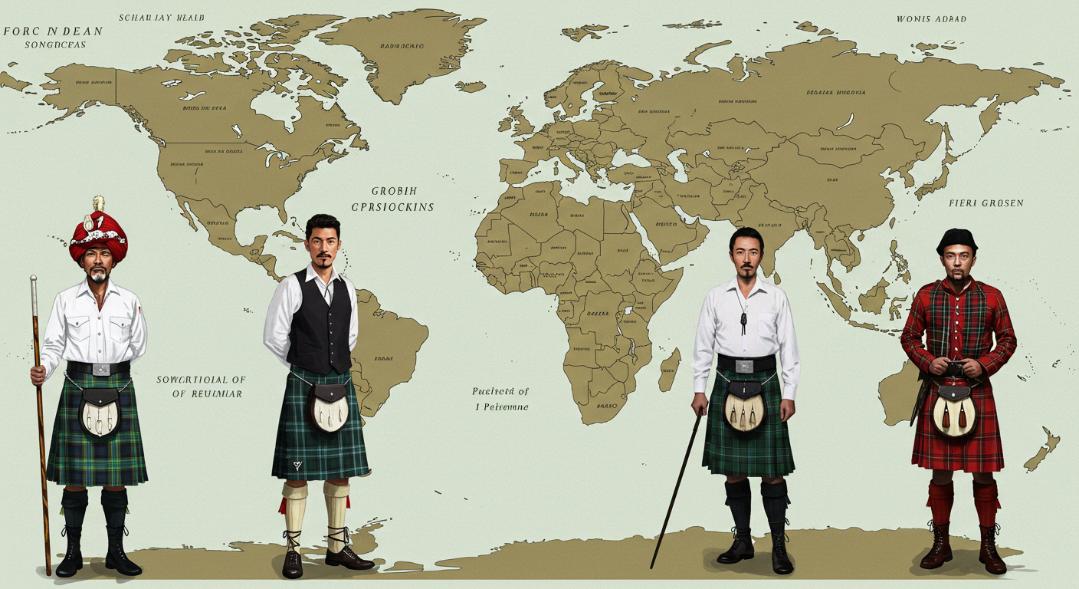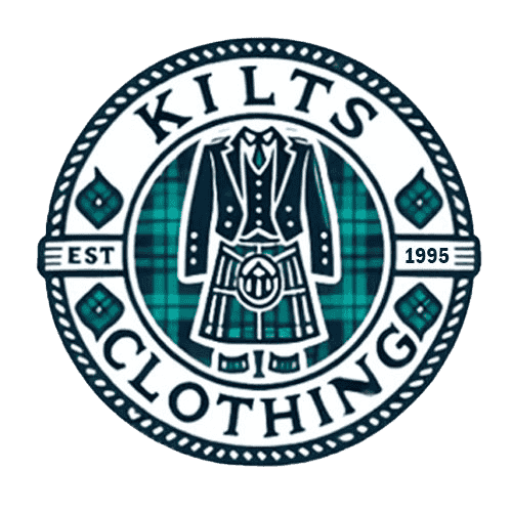- Mens Utility Kilt Collection
- Tartan Kilts Collection
- Best Hybrid Kilt Collection
- Leather Kilts
- Denim Kilts Womens
- Casual Kilt
- Formal Kilt
- Irish Kilt
- Kilt Vest
- Scottish Kilt
- Sport Kilts for Men – Durable & Comfortable
- Tactical Kilt – Durable Multicam Kilt for Men
- Wedding Kilt
- Firefighter Kilt
- Flag Kilts
- Military Kilt
Beyond Scotland and Ireland: Kilt Man Styles in Other Cultures Around the World

When people think of kilts, they often associate them with Scotland and Ireland. These countries have made the kilt famous as a symbol of national pride and a practical garment with centuries of history. However, the concept of a skirt-like garment made from fabric wrapped around the waist exists in many cultures beyond Scotland and Ireland. This blog explores how "kilt man" styles appear across the globe, highlighting cultural similarities and differences in using such garments.
Introduction
Kilts are widely regarded as iconic in Scotland and Ireland. These garments, worn by men, are part of the cultural fabric of both countries, symbolizing pride, history, and tradition. However, many might not know that other regions worldwide have developed similar garments with the same core characteristics. These garments are often worn in traditional, ceremonial, or modern contexts. This blog delves into the fascinating global spread of "kilts for men" styles and their adaptations in various cultures across Europe, Africa, Asia, the Pacific Islands, and beyond.
1. The Kilt in Scotland and Ireland: A Historical Foundation
The kilt has long been a symbol of identity in Scotland, especially in the Scottish Highlands. Initially worn by men as a practical garment, the kilt evolved into a symbol of clan pride, often sporting different tartans. The kilt was traditionally made from woolen cloth and worn with accessories like the sporran (a small pouch) and the sgian-dubh (a small knife). Irish kilts share many similarities with their Scottish counterparts, though they have unique styles and regional variations.
However, both Scottish and Irish kilts trace their roots back to ancient Celtic traditions. While the garments may have evolved differently in their respective countries, the core principle of wearing a wrapped garment remains the same. Today, kilts in these countries are still worn at special events such as weddings, festivals, and national celebrations.
2. Kilt-Like Garments in Other European Cultures
The Greek Fustanella
The Greek fustanella is one of the most iconic examples of a kilt-like garment outside of Scotland. Worn by Greek men, particularly during ceremonial events, the fustanella features a pleated design, much like the Scottish kilt. The garment is typically made from white or off-white fabric, and its pleats add a dynamic, flowing movement, which is crucial for certain traditional dances.
The fustanella's cultural significance stretches back to the 15th century and has been associated with Greek warriors and leaders. Today, it is still worn on national holidays or during formal state occasions, like changing the guards at the Greek Parliament.
The Romanian "Ițari" and "Pălăria"
In Romania, the traditional men's garments, ițari and pălăria, are similar to the kilt. The ițari are trousers often worn with a large belt. Still, in rural areas, the style includes skirts or aprons tied around the waist. The pălăria is a wide-brimmed hat that complements the outfit, much like how accessories like sporrans complete the Scottish kilt.
Rural men often wear these garments during festivities or important cultural celebrations, and they have become part of Romania's national identity. Like kilts, they showcase the importance of national pride and tradition, with regional patterns that signify various cultural subgroups within Romania.
3. Kilt Man Styles in Africa
West African Sarouel
In West Africa, a traditional garment called the sarouel is worn by men closely resembling the kilt. The sarouel is a loose, flowing piece of cloth worn around the waist, and while it is usually more pant-like than the kilt, its function and construction share striking similarities. Worn especially during ceremonial occasions and festivals, the sarouel offers comfort and practicality for the wearer's movements.
In Mali, Senegal, and Burkina Faso, the sarouel is a staple of men's traditional attire. It is often worn with brightly colored fabrics, intricate beadwork, or embroidery, highlighting the cultural significance of the garment.
Zulu Regalia
The Zulu people of South Africa have their version of kilt-like garments. Zulu men traditionally wore a skirt or loincloth made from animal skin, and this attire is still worn today for ceremonial and cultural purposes. These garments are symbolic in rituals, particularly during rites of passage, and are often adorned with beaded embellishments.
While the Zulu garments differ in construction from the Scottish kilt, they share the idea of a wrapped fabric garment that denotes pride, strength, and a connection to cultural heritage.
4. The Influence of the Kilt in Asia
Indian Dhoti
In India, the dhoti is a traditional garment worn by men, similar in structure to the kilt. The dhoti consists of a long piece of cloth wrapped around the waist and tied in place, often with pleats at the front. This style is popular in many parts of India, particularly for formal events, religious ceremonies, and weddings.
Though the dhoti has its roots in India, it can also be found in other South Asian countries, such as Bangladesh and Nepal. Like the kilt, the dhoti symbolizes respect for tradition. It is still widely worn today in rural and urban areas.
Japanese Hakama
The hakama is a traditional Japanese garment worn by men and women, often during formal ceremonies. The male version of the hakama consists of pleated trousers tied at the waist with a cord. The garment is worn over a kimono and is commonly seen at Japanese weddings, tea ceremonies, and martial arts competitions.
While the hakama is distinctly different from the kilt in terms of design, it shares the pleating and waist-tying techniques found in the kilt. Both garments represent respect for tradition, culture, and formal occasions.
5. Kilt Variants in the Pacific Islands
Samoan Lava Lava
In the Pacific Islands, particularly in Samoa, men wear the lava lava, a cloth wrapped around the waist, much like a kilt. The garment is often worn daily by men in rural areas or during festivals. LavenderLike kilt, the lava is a comfortable and practical garment for hot climates and active lifestyles.
In Hawaii, a similar garment known as the pau skirt is worn by men and women, often during dances or festivals. The lava and the pau skirt showcase the global spread of kilt-like garments, where cultural significance, comfort, and tradition converge.
6. The Kilt's Global Appeal in Modern Fashion
In recent years, male kilt have moved beyond traditional cultural boundaries and become part of mainstream fashion. Designers worldwide have experimented with kilt-inspired garments, blending contemporary styles with traditional elements. These modern kilts often feature bold colors, unusual fabrics, and innovative designs, reflecting the adaptability and appeal of the classic kilt.
Conclusion
Adult kilt and similar garments have made their mark in cultures far beyond Scotland and Ireland. From Greece to Africa and Asia, "kilt man" styles appear in many forms, each carrying rich cultural significance and tradition. The global appreciation for these garments shows how clothing can transcend geographical boundaries, adapt to local customs, and continue to influence fashion in the modern era. The kilt remains a powerful symbol of heritage and identity, whether worn for ceremonial purposes or as a fashion statement.


